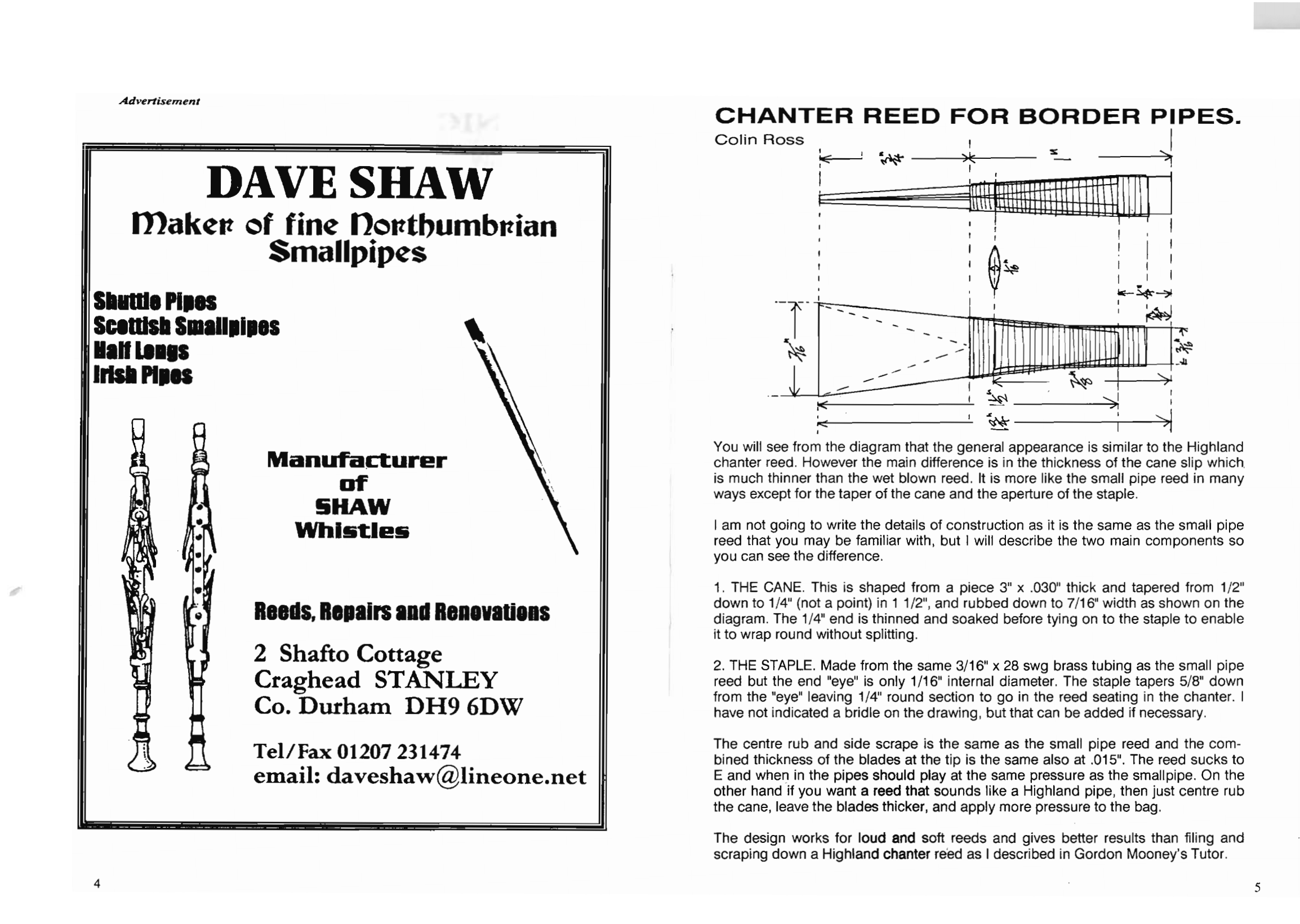CHANTER REED FOR BORDER PIPES

You will see from the diagram that the general appearance is similar to the Highland chanter reed. However the main difference is in the thickness of the cane slip which is much thinner than the wet blown reed. It is more like the small pipe reed in many ways except for the taper of the cane and the aperture of the staple.
I am not going to write the details of construction as it is the same as the small pipe reed that you may be familiar with, but I will describe the two main components so you can see the difference.
- THE CANE. This is shaped from a piece 3" x .030" thick and tapered from 1/2" down to
1/4" (not a point) in 1 1/2", and rubbed down to 7/16" width as shown on the diagram. The 1/4" end is thinned and soaked before tying on to the staple to enable it to wrap round without splitting.
- THE STAPLE. Made from the same 3/16" x 28 swg brass tubing as the small pipe reed but the end “eye” is only 1/16" internal diameter. The staple tapers 5/8" down from the “eye” leaving 1/4" round section to go in the reed seating in the chanter. I have not indicated a bridle on the drawing, but that can be added if necessary.
The centre rub and side scrape is the same as the small pipe reed and the combined thickness of the blades at the tip is the same also at .015". The reed sucks to E and when in the pipes should play at the same pressure as the smallpipe. On the other hand if you want a reed that sounds like a Highland pipe, then just centre rub the cane, leave the blades thicker, and apply more pressure to the bag.
The design works for loud and soft reeds and gives better results than filing and scraping down a Highland chanter reed as I described in Gordon Mooney’s Tutor.
